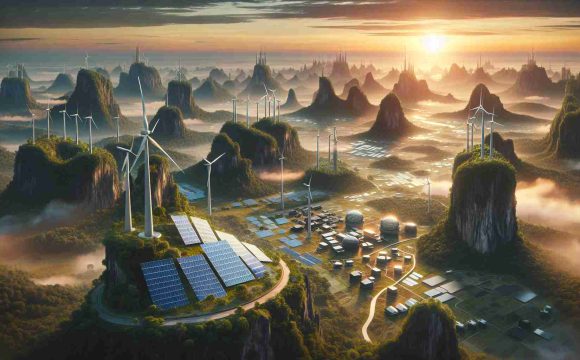Solar Power Takes the Lead
China’s renewable energy landscape is undergoing a remarkable transformation. By the end of October, solar power generation eclipsed both wind and hydroelectric sources, emerging as the nation’s second largest form of electricity generation. Official numbers reveal that the installed solar capacity reached an impressive 793 gigawatts, a milestone for the country.
Solar energy now comprises 24.8 percent of China’s total power generation capacity, reflecting a staggering 48 percent growth compared to the previous year. This significant advancement highlights the nation’s commitment to enhancing its clean energy portfolio.
The distribution of solar installations presents an interesting picture. The eastern and western regions of China dominate solar capacity, collectively accounting for nearly three-quarters of the total. In the east, the focus is primarily on distributed systems, which harness solar energy at smaller scales. In contrast, the western regions are prioritizing utility-scale projects, designed to generate larger amounts of electricity.
Looking ahead, projections indicate that China will continue to amplify its solar power efforts. Experts estimate an addition of approximately 250 million kilowatts in 2024, with the cumulative capacity expected to surpass 850 million kilowatts. This growth will represent more than 25 percent of the country’s overall installed power capacity, showcasing an unwavering commitment to renewable energy innovation.
China’s Solar Power Revolution: The New Frontier of Renewable Energy
The Rise of Solar Power in China
China is at the forefront of a renewable energy transformation, with solar power rapidly becoming a dominant player in the country’s energy landscape. As of the end of October, China’s installed solar capacity has reached an astonishing 793 gigawatts, positioning it as the second-largest source of electricity generation nationwide. This remarkable growth indicates that solar energy now accounts for 24.8 percent of the total power generation capacity in China, signifying a staggering 48 percent increase from the previous year.
Regional Insights and Distribution of Solar Installations
The distribution of solar energy installations across China reveals a fascinating dynamic. The eastern and western regions are the primary zones for solar capacity, together making up nearly 75 percent of the total installations.
– Eastern Regions: These areas are largely focusing on distributed solar systems. These systems are typically smaller-scale installations that allow individuals and businesses to harness solar energy locally.
– Western Regions: In contrast, the western provinces are investing heavily in utility-scale solar projects, which are designed to generate substantial amounts of electricity and support larger grids.
Looking Forward: Projections and Growth
The future of solar energy in China appears bright. Industry experts forecast that in 2024, the nation is expected to add around 250 million kilowatts of solar capacity, pushing the cumulative total beyond 850 million kilowatts. This rapid expansion means that solar energy could constitute over 25 percent of the overall installed power capacity, further solidifying China’s leadership in renewable energy.
Pros and Cons of Solar Energy in China
Pros:
– Environmental benefits: Significant reduction in greenhouse gas emissions.
– Energy independence: Reduces reliance on fossil fuels.
– Economic growth: Creation of jobs in manufacturing and installation.
Cons:
– Initial costs: High upfront investment for solar infrastructure.
– Land use: Space required for large solar farms may compete with agriculture.
– Intermittency issues: Solar energy production is reliant on sunlight, necessitating backup solutions.
Innovations and Sustainability Initiatives
China’s commitment to solar energy goes hand in hand with innovative technologies aimed at increasing efficiency and sustainability. Key innovations include:
– Bifacial Solar Panels: These panels capture sunlight from both sides, thereby enhancing overall energy output.
– Energy Storage Solutions: The use of advanced battery technology for storing solar power helps address the intermittency issues related to solar energy.
Furthermore, sustainable practices are being emphasized, such as recycling materials used in solar panel production to minimize environmental impact.
Market Analysis and Forecast
The solar energy market in China is evolving, with increasing competition driving advancements in technology and reductions in costs. As more renewable energy policies are enacted, the demand for solar energy is anticipated to continue its upward trajectory.
– Pricing Trends: The price per watt of solar energy has dramatically decreased over the past decade, making it more accessible to both consumers and businesses.
– Government Support: Continued investment and subsidies from the government are essential to maintain this growth pattern.
Conclusion
China’s solar power industry stands as a testament to the nation’s strategic focus on renewable energy. With ambitious plans for future expansion and a commitment to sustainable practices, China is not only leading the charge in renewable energy but also setting a global example in the fight against climate change.
For more in-depth information on solar energy and China’s renewable energy policies, visit China Energy Portal.







